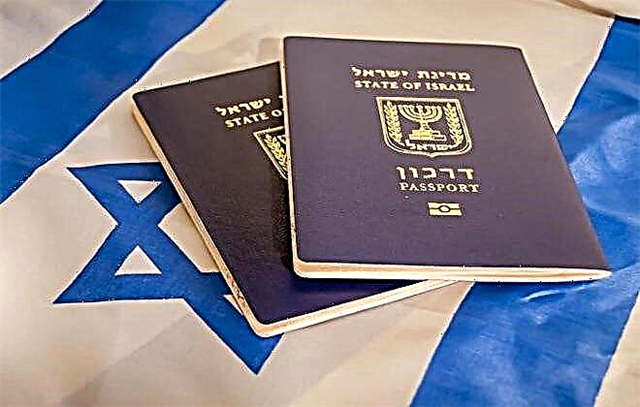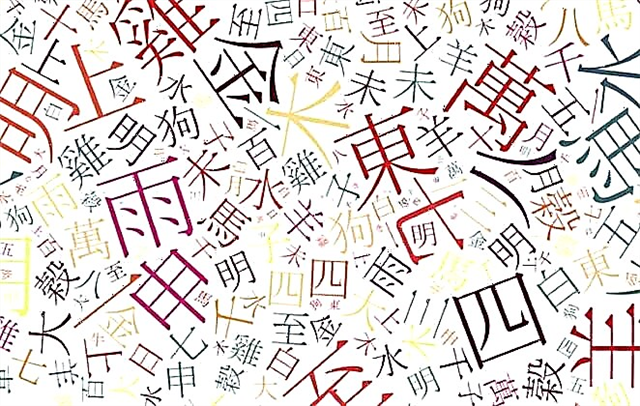Every year the Chinese language is getting closer to the first line in the list of the most popular in the world. In 2021, it is spoken by almost 15% of the world's inhabitants. Moreover, in the PRC there are simultaneously about a dozen different dialects, which differ markedly from each other. The most common of these is Mandarin.

Historical reference
For the first time, almost the entire territory of modern China was united under one state during the era of the Song dynasty (from 960 to 1279). In those days, almost every village spoke its own dialect, which was often incomprehensible to its neighbors.
Beijing was gradually becoming the center of the country's social life. It was on the basis of the dialect adopted in this city that the first common Chinese language began to form, which is now commonly called "Old Mandarin".
An important milestone in the history of Old Mandarin was the release in 1324 (already under Mongol rule) of the rhyme dictionary "Zhongyuan-yinyun". In the future, many significant works of Chinese literature were created in this language.
Nevertheless, from 1644 to 1912, Manchu, the native language of the ruling Qing dynasty, was the official language of the Celestial Empire. At the same time, even the rulers themselves gradually ceased to use it, using the Mandarin dialect instead.
Despite the fact that since 1912 the official language of the country is considered to be “Standard Chinese” created on the basis of Mandarin, only 70% of Chinese speak it, and in the southern regions it is almost never used.
Where is Mandarin common
 In Russian linguistics, instead of the borrowed term "mandarin", for a long time either the Chinese name "Putonghua" or the concept "Northern Chinese" was used. And this is no coincidence, because even as of 2021, most of the Chinese who speak this language live in the northern or central provinces of the country.
In Russian linguistics, instead of the borrowed term "mandarin", for a long time either the Chinese name "Putonghua" or the concept "Northern Chinese" was used. And this is no coincidence, because even as of 2021, most of the Chinese who speak this language live in the northern or central provinces of the country.
All provinces with a predominantly “tangerine” use are marked in green on the map. The richer the hue, the more people in the province speak Mandarin or one of its dialects.
Outside China, the language has official status in Taiwan and Singapore. In addition, this is the language most often used by the large Chinese diaspora around the world to communicate with each other.
Dialects of the language
 The most common type of Mandarin is known as the Mandarin language, and it is he who bears the state status in the PRC. It is most often heard in and around Beijing.
The most common type of Mandarin is known as the Mandarin language, and it is he who bears the state status in the PRC. It is most often heard in and around Beijing.
- To the north of the capital, dialects are widespread, which are usually grouped into the northeastern subgroup. These dialects are spoken mainly in Manchuria.
- A little south of Beijing, in the south of Hebei province and in Shandong province, the Ji-lu dialect is spoken, which is one of the least common.
- Another not the most popular Mandarin dialect is Jiao-Liao, which is spoken on the eastern coasts of Heilongjiang and Liaoning provinces.
- The belt of popularity of dialects of the Zhongyuan subgroup runs through the whole of central China - they are equally common in the northeast and in the northwest of the country.
- Gansu Province and northeastern Xinjiang Uygur belong to the zone of popularity of dialects of the Lan-Yin family.
- In the north of the provinces of Jiangsu and Anhui, the Jianghuai subgroup of adverbs is widespread.
- Finally, from the province of Sichuan and south to the very border with Burma, there is a belt of the southwestern subgroup of dialects.
Answers to frequently asked questions
Very often people who are just starting to learn this dialect wonder why the Chinese language is called "Mandarin". So, this word got into Russian terminology from English, and the British, in turn, copied it from the Portuguese.
The fact is that it was the Portuguese navigators who became the first Europeans to establish contacts with China. Of course, the merchants and missionaries negotiated mainly with the officials of the imperial court. It was these officials that the Europeans began to call "mandarins." The etymology of this word goes back to the Malay menteri, which in turn was derived from the Sanskrit mantrin, which means "minister" or "adviser".
And since the officials of the Ming dynasty already used the Northern Chinese dialect of the language with might and main, the Portuguese began to call this language Mandarin itself. Interestingly, the same logic can be traced in the Chinese name of the Mandarin language - guanhua, which can be translated as "the language of officials."
If you are wondering how many languages there are in China, then modern linguistics identifies 10 dialect groups, each of which can be considered a full-fledged language. The list includes:
- mandarin;
- Cantonese (also known as Yue, it is spoken by most of the inhabitants of the southeastern and southwestern provinces of the PRC);
- gan (typical for Jiangxi province);
- Hakka (the least understood dialect for most Chinese, spoken by sub-ethnic groups in the south of the country);
- min (one of the most ancient variants of the language, common in the south of China);
- y (used in Shanghai);
- xiang (typical for Hunan province);
- jin (used in Shanxi province);
- Anhui (exists only in Anhui province);
- pinghua (common in Guangxi Zhuang Autonomous Region).
 The second most common in the Celestial Empire is the Cantonese dialect, so many are interested in what is the difference between “Mandarin” and Cantonese. So, despite the fact that these languages use the same hieroglyphs for writing, their phonetics are completely different.
The second most common in the Celestial Empire is the Cantonese dialect, so many are interested in what is the difference between “Mandarin” and Cantonese. So, despite the fact that these languages use the same hieroglyphs for writing, their phonetics are completely different.
Both of these adverbs belong to the group of tones and syllables: this means that instead of standard letters, the basis of languages is standard syllables, which, moreover, have different meanings depending on the intonation of their pronunciation. And even despite the fact that most of the syllables in these two languages are the same, the intonation when pronouncing them is completely different.
So, in “tangerine” four basic tones are used: even, going up, going down and up, and going down. In Cantonese, the number of tones reaches 9. True, in practice, in most dialects of the Cantonese language, only 6 of them are used, but the resulting difference in pronunciation of the same words is enough for the Chinese from the south and north of the country not to understand each other.
It is interesting that when people who have been using Cantonese all their lives try to use Mandarin in communication, they involuntarily use their familiar tones, as a result of which the resulting dialect becomes poorly understood by both Mandarin speakers and people who know only Cantonese.
When studying a foreign language, it is also worth knowing how it is customary to record the sounds common in it. The standard transcription for "mandarin" in Latin notation is called "pinyin" and was created in 1959. The Russian transcription of this language is known as the Palladium system and appeared in 1839 (that is, almost 100 years before the English version).
Conclusion
Mandarin is the most widely spoken language in China. At the same time, it is used mainly in the center and in the north of the country, while the southwest and southeast still use other dialects. Despite the same grammar, this language is incomprehensible to speakers of other dialects, since it uses significantly fewer tones than the southern versions of Chinese.











